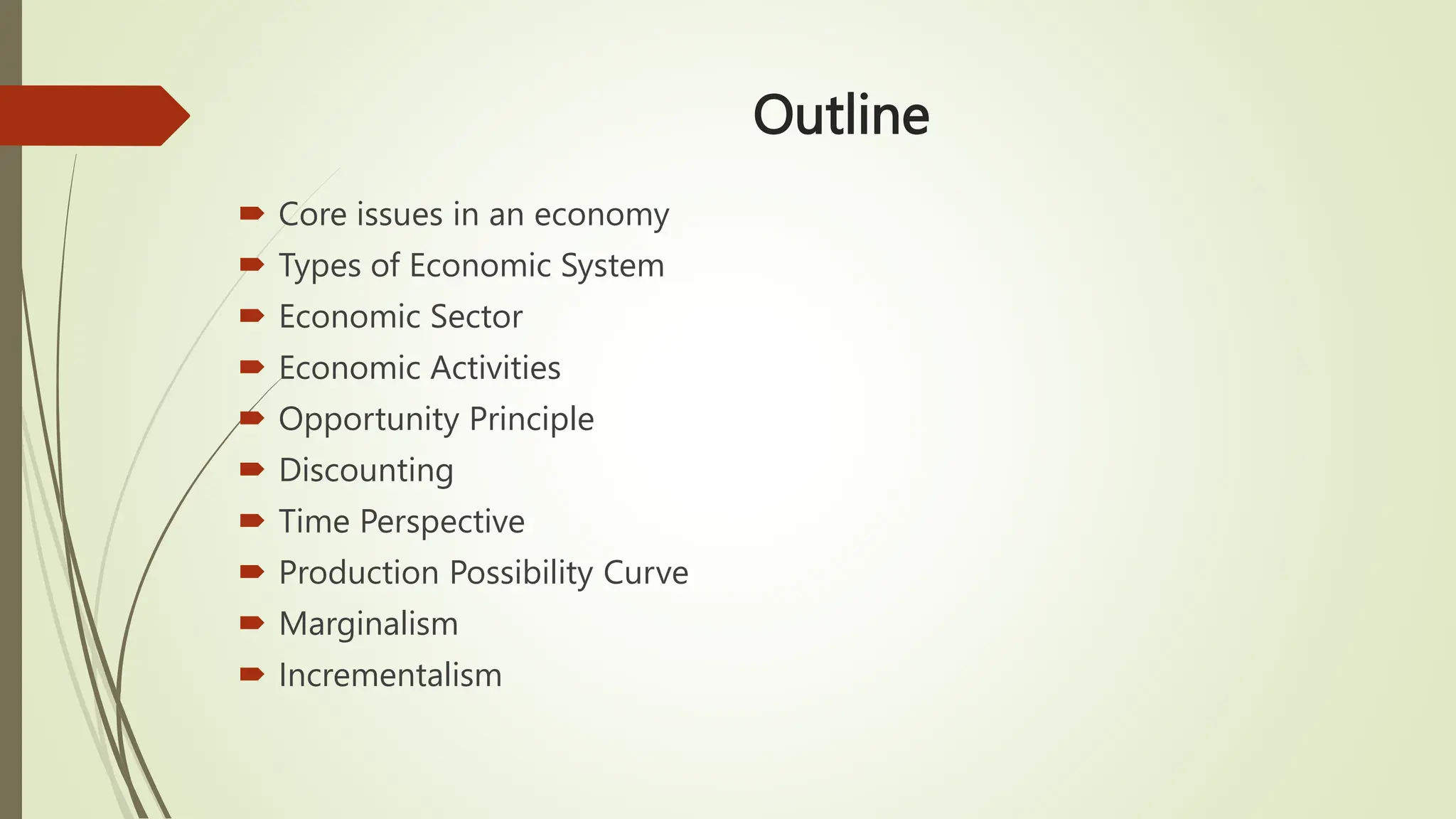This document provides an overview of key economic concepts. It discusses core issues in an economy like what and how to produce, and for whom. It also defines different types of economic systems like capitalism, socialism, and mixed economies. Additionally, it outlines economic sectors, activities, and principles such as opportunity cost, discounting, and the production possibility curve. The production possibility curve illustrates the tradeoffs between producing different goods given limited resources.



































